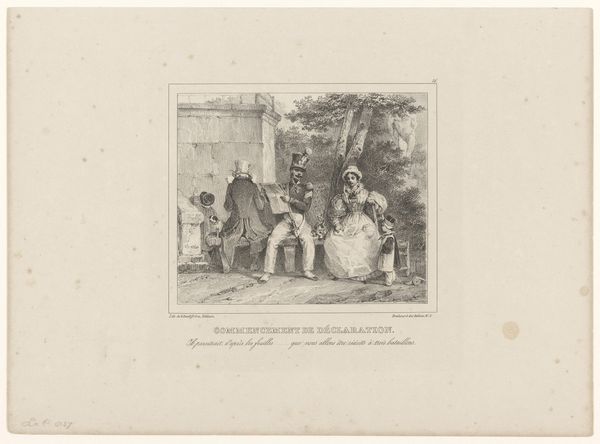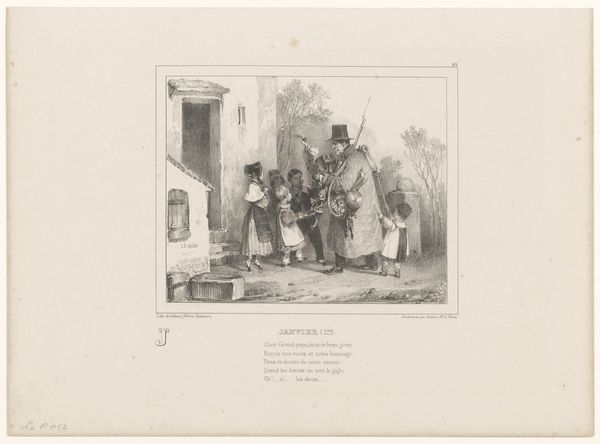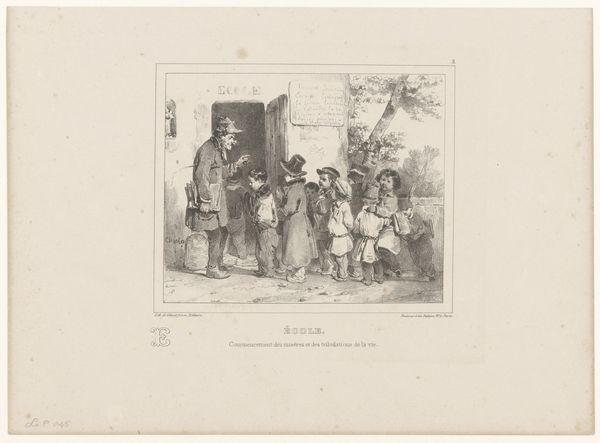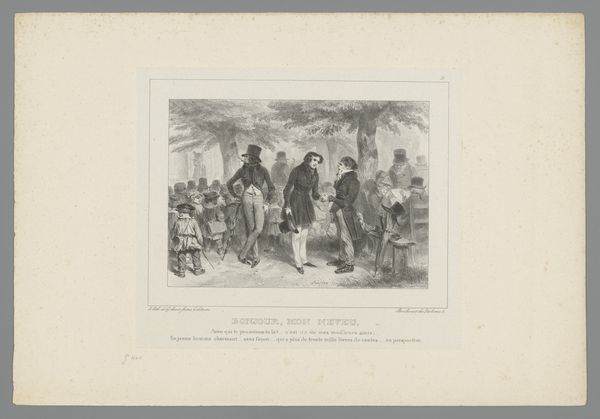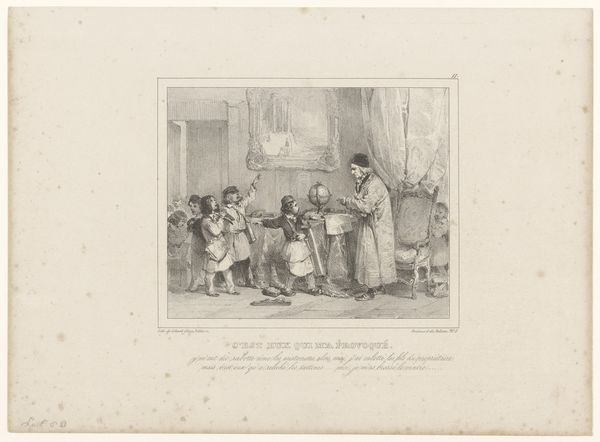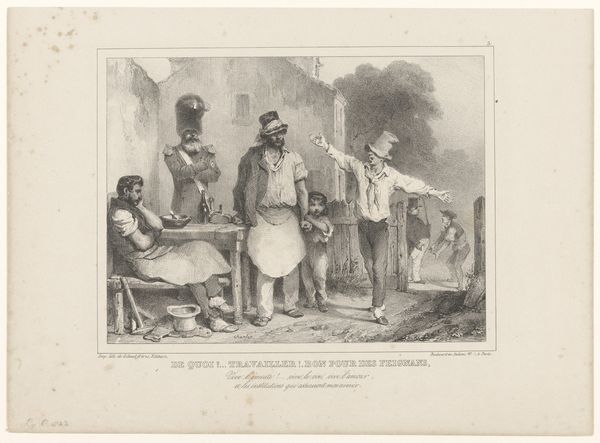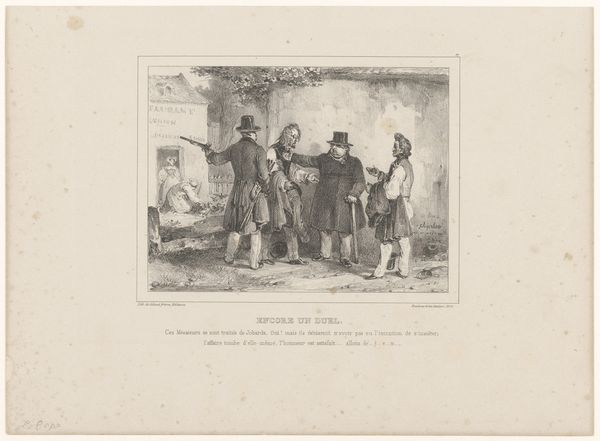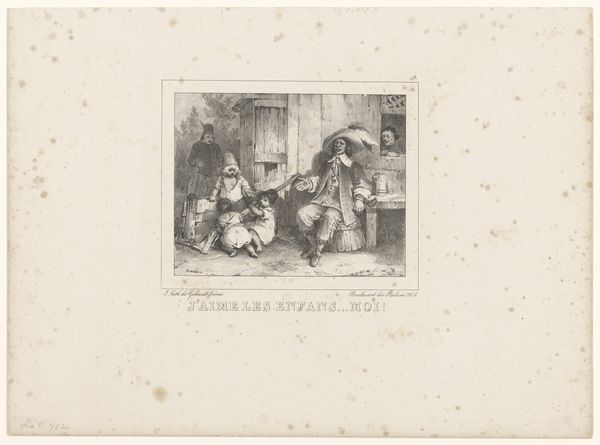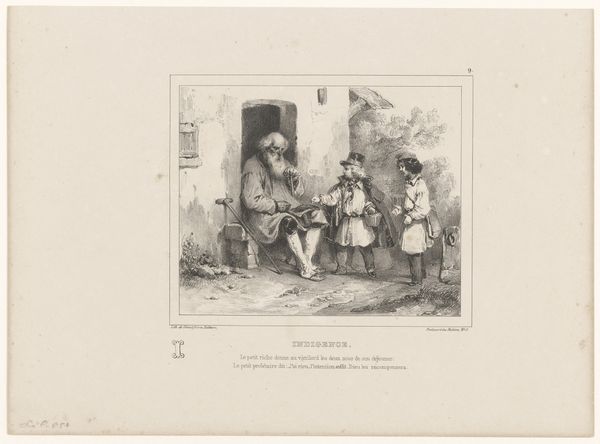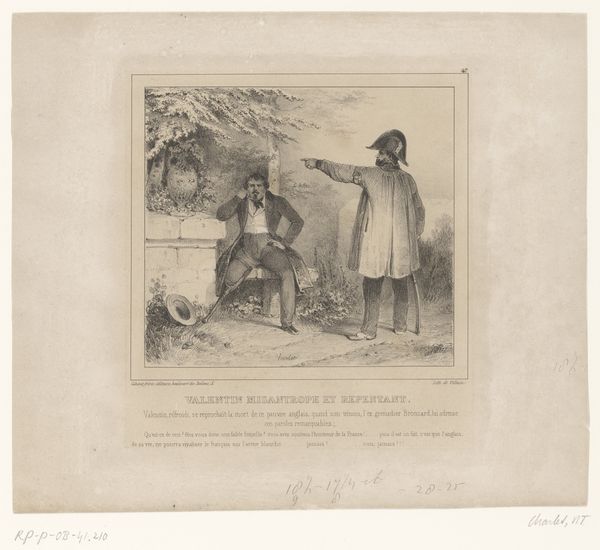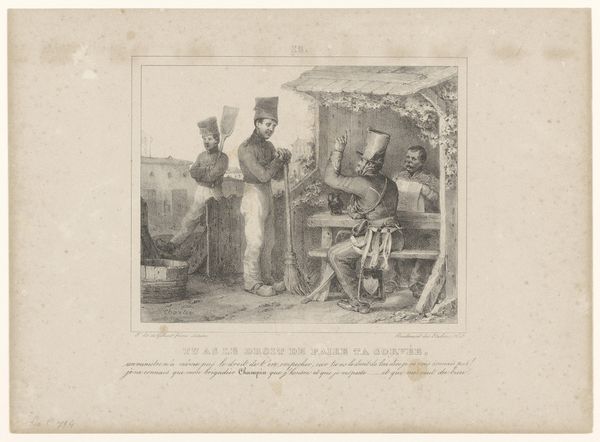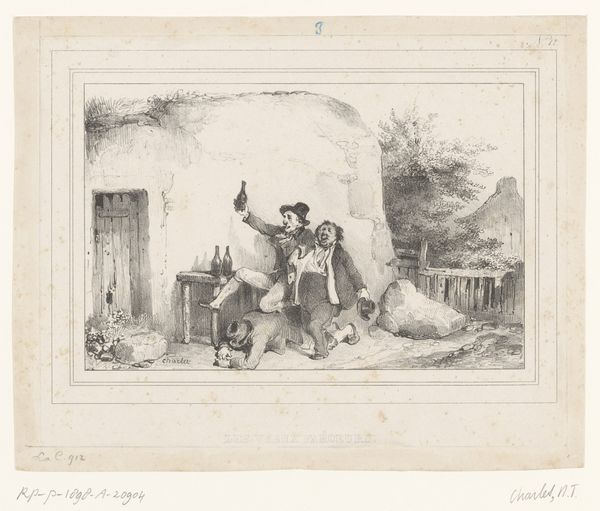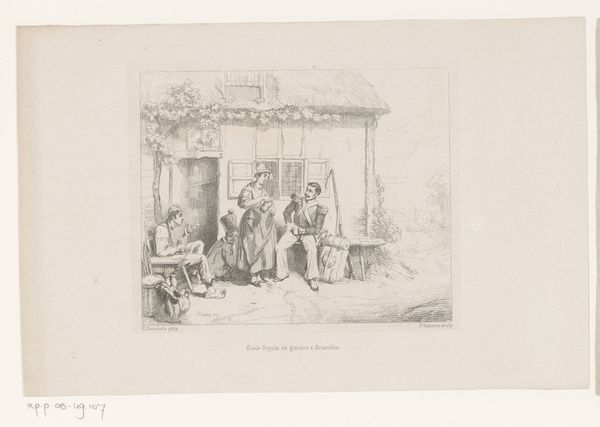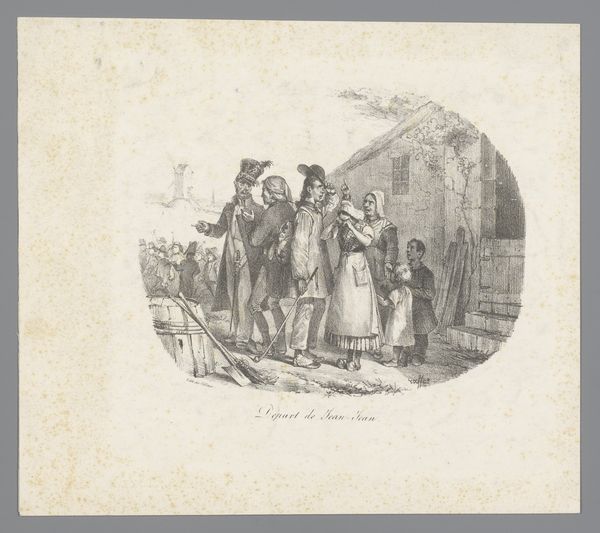
print, etching, engraving
#
portrait
#
narrative-art
# print
#
etching
#
old engraving style
#
figuration
#
child
#
old-timey
#
romanticism
#
line
#
genre-painting
#
engraving
Dimensions: height 247 mm, width 338 mm
Copyright: Rijks Museum: Open Domain
Curator: Nicolas Toussaint Charlet's "Officier en soldaat met kinderen bij een kroeg," created in 1834, presents a snapshot of military life rendered through the detailed etching and engraving techniques of the period. What captures your initial impression? Editor: There’s a certain grittiness that emerges from this print. It seems to convey the rawness of the soldiery experience juxtaposed with the vulnerability of childhood poverty near the taverns of the time. One feels almost like one can smell the stale beer and dust coming off it. Curator: Indeed, Charlet masterfully employs line work to create a sense of depth and texture. Consider how the cross-hatching defines the soldiers' uniforms and the crumbling facade of the tavern itself. Observe, too, how this contrast with smoother lines highlight the softer features of the children, creating a delicate visual hierarchy. Editor: The materiality here is also noteworthy; we see not just a tavern, but rather a canteen “DE LA FRANCE.” Considering that etching is an intensive intaglio printmaking technique, where incisions are etched into a metal plate with acid. Think of the skill that’s needed for this; and furthermore how that intense skill would be commodified during wartime to give charm to this officer’s and soldiers’ dealings near the tavern with poor children. It makes you consider what this piece contributes to cultural consciousness. Curator: You touch upon a vital point. The act of producing multiples, enabled by printmaking techniques, democratizes art, and further extends and refines artistic vocabulary. Moreover, the composition creates a semiotic relationship with the setting; a narrative in itself. It tells of life's broader theater and its ever shifting social dynamics. The officers become characters of a new narrative. Editor: The socio-economic dimensions seem inherent to Charlet’s craft as well. Etching allowed artists like Charlet to circulate images quickly. This distribution mattered, given his themes regarding the soldiers of the Napoleonic era who impacted the landscape, labor and the poor during his time. This challenges the separation between labor and "high art.” Curator: Precisely. Charlet encapsulates both a technical mastery and visual dialogue within the constraints of his chosen medium and socio-political era. The narrative, structure, form and composition are harmonized to reflect both the artistic principles of his era while making keen observations about the circumstances of 19th century France. Editor: Agreed, examining his etching emphasizes process and materials by creating dialogue between the artist, his social setting, and his place of production.
Comments
No comments
Be the first to comment and join the conversation on the ultimate creative platform.
